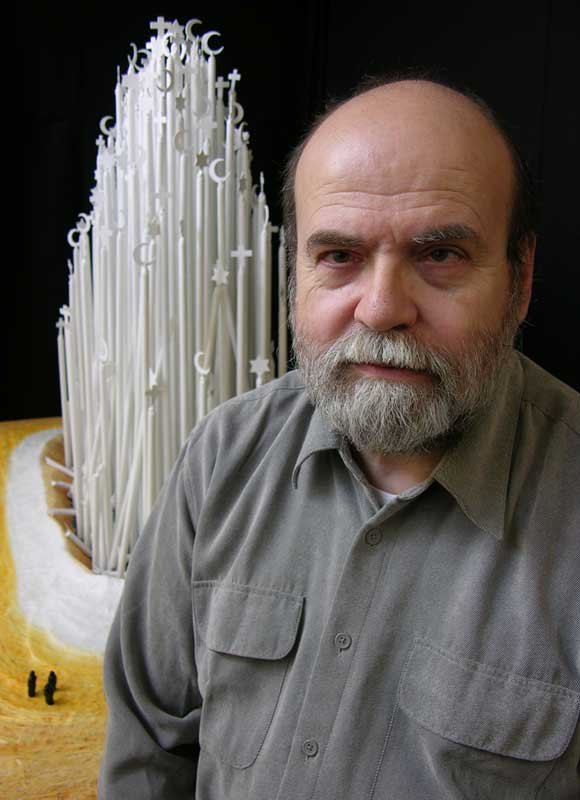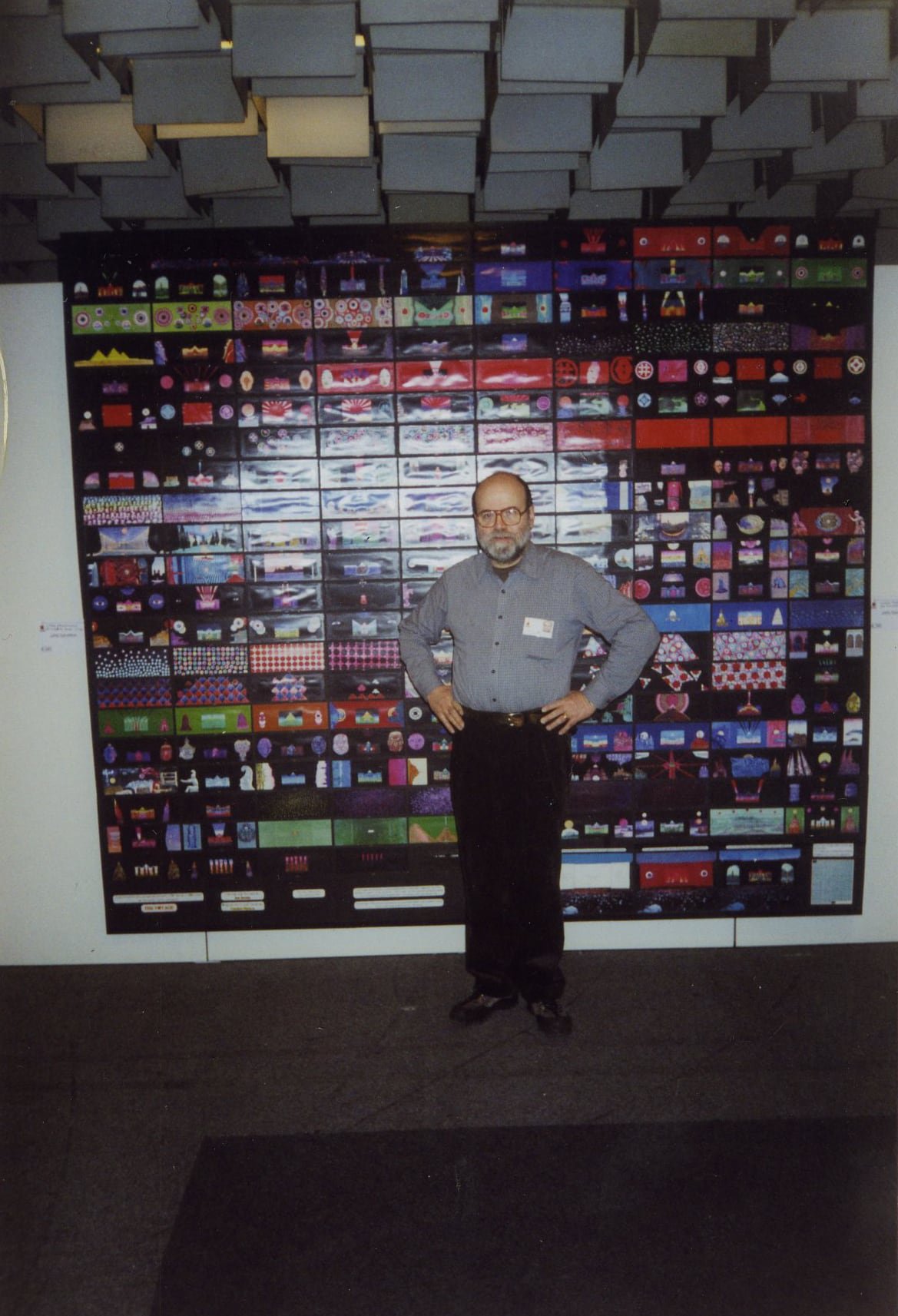Meet The Artist
Jan Sawka
Jan Sawka was a contemporary artist of Polish origin and global reach, who became known for vibrant and subversive work in the Polish counterculture of the 1970’s, until his exile. From 1977, he lived in the United States until his death in 2012. Accomplished in multiple disciplines, he was a painter, printmaker, graphic artist, set designer, multimedia artist, and architect. He created his own distinct style of art, whose themes range from phenomenology, nuanced social and political issues, to the environment.
Photo by: Amanda Schweitzer
While still a student, Sawka became a well-known figure in the world of Polish counter-culture, active as a set-designer and graphic artist for avant-garde theaters (Kalambur, Teatr STU) and cabarets. He created sets and designed posters for Jazz Nad Odrą (Jazz on the Reiver Oder). He was among the key organizers of artistic events at festivals, creating well-known happenings which were of a politically satirical and absurdist nature at FAMA, the annual student art festival. He illustrated books, including samizdats (underground publications) of the most outstanding contemporary Polish poets of his time, including Edward Stachura, Leszek Aleksander Moczulski, Ryszard Krynicki, Stanislaw Baranczak, Adam Zagajewski and others who comprised the Polish “New Wave” of poetry. He also exhibited his paintings and fine-art prints, as well as curating exhibitions. In addition to all these activities, by his late 20s Sawka had become a star of the Polish Poster School.
In 1975, Jan Sawka was instrumental in organizing an exhibition of paintings, prints, and posters called “The Four” at the Poster Museum in Wilanów (Warsaw). The show was a “Trojan Horse”—a plan masterminded by Sawka and the museum’s then-director Janina Fijałkowska to show the politically controversial fine art of J.J. Aleksiun, Jerzy Czerniawski, Jan Sawka, and S. Stankiewicz, known for their art-poster work as the “Wrocław Four.” The exhibition was an instantaneous hit, not only with Poles, but also with guests visiting from abroad, creating consternation and problems for the regime, which could not definitively shut it down without embarrassment. This show would soon lead to Sawka’s exile.
Later in 1975, Sawka, participated in the International Festival of Painting at Cagnes-Sur-Mer, France, where he won the “Oscar de la Peinture” and the award of the President of the Republic of France for “Innovation in the Art of Painting.” Thanks to this award, Sawka had a place to go when he and his family were expelled in 1976. In Paris, he became an Artist in Residence at the Centre Georges Pompidou. That same year Sawka represented France and the Pompidou Center with an exhibition of his work in the United States at the Aspen Art and Design Conference that was being held in honor of the Bicentennial of the United States. While living in France, he continued to develop his career rapidly. This drew the attention of the communist regime in Poland, where the hope had been that his career would fizzle out. The Embassy of the Polish People’s Republic of Poland (i.e, the communist regime in Poland) refused to renew the Sawka family’s passports, which had been issued for one-way only travel. The Sawka family had only three days left on their French residency cards.








